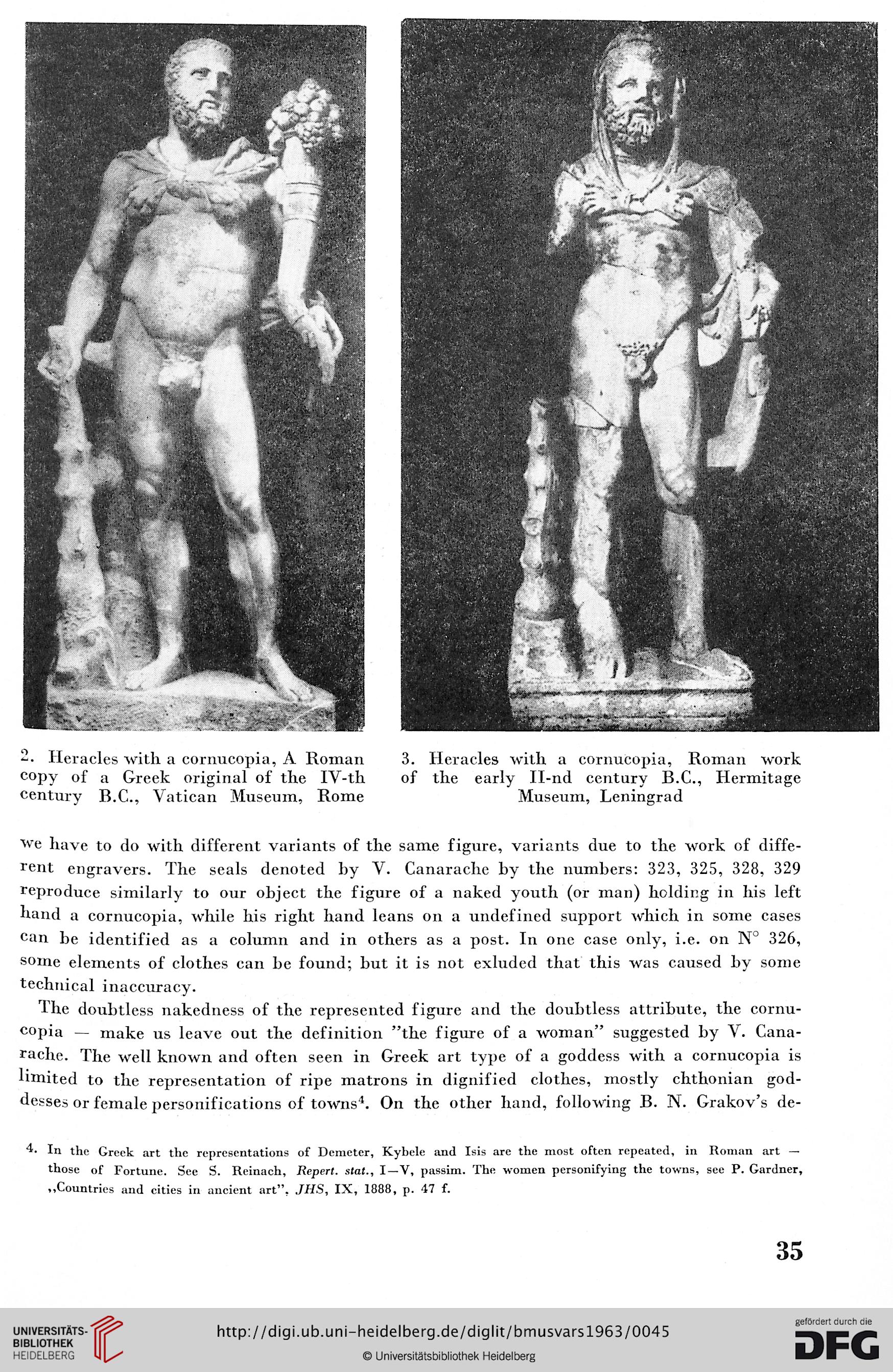2. Heracles with a cornucopia, A Roman
copy of a Greek original of tlie IV-th
century B.C., Vatican Museum, Rome
3. Heracles with a cornucopia, Roman work
of the early Il-nd century B.C., Hermitage
Museum, Leningrad
we have to do with different variants of the same figurę, variants due to the work of diffe-
rent engravers. The seals denoted by V. Canarache by the numbers: 323, 325, 328, 329
reproduce similarly to our object the figurę of a naked youth (or man) holding in his left
hand a cornucopia, while his right hand leans on a undefined support which in some cases
Can be identified as a column and in others as a post. In one case only, i.e. on N° 326,
soine elements of clothes can be found; but it is not exluded that this was caused by some
techuical inaceuracy.
The doubtless nakedness of the represented figurę and the doubtless attribute, the cornu-
copia — make us leave out the definition "the figurę of a woman" suggested by V. Cana-
rache. The well known and often secn in Greek art type of a goddess with a cornucopia is
limited to the representation of ripe matrons in dignified clothes, mostly chthonian god-
desses or femalc personifications of towns4. On the other hand, following B. N. Grakov's de-
4- In the Greek art the representations of Demeter, Kybele and Isis are the most often repeated, in Roman art —
those of Fortune. Sec S. Reinach, Repert. sial., I —V, passim. The women personifying the towns, see P. Gardner,
,,Countrics and cities in aneient urt", JHS, IX, 1888, p. 47 f.
35
copy of a Greek original of tlie IV-th
century B.C., Vatican Museum, Rome
3. Heracles with a cornucopia, Roman work
of the early Il-nd century B.C., Hermitage
Museum, Leningrad
we have to do with different variants of the same figurę, variants due to the work of diffe-
rent engravers. The seals denoted by V. Canarache by the numbers: 323, 325, 328, 329
reproduce similarly to our object the figurę of a naked youth (or man) holding in his left
hand a cornucopia, while his right hand leans on a undefined support which in some cases
Can be identified as a column and in others as a post. In one case only, i.e. on N° 326,
soine elements of clothes can be found; but it is not exluded that this was caused by some
techuical inaceuracy.
The doubtless nakedness of the represented figurę and the doubtless attribute, the cornu-
copia — make us leave out the definition "the figurę of a woman" suggested by V. Cana-
rache. The well known and often secn in Greek art type of a goddess with a cornucopia is
limited to the representation of ripe matrons in dignified clothes, mostly chthonian god-
desses or femalc personifications of towns4. On the other hand, following B. N. Grakov's de-
4- In the Greek art the representations of Demeter, Kybele and Isis are the most often repeated, in Roman art —
those of Fortune. Sec S. Reinach, Repert. sial., I —V, passim. The women personifying the towns, see P. Gardner,
,,Countrics and cities in aneient urt", JHS, IX, 1888, p. 47 f.
35




